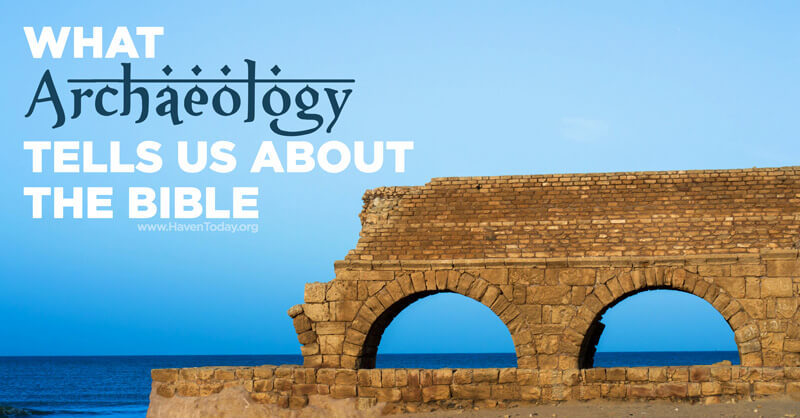When we celebrate Easter each year, we aren’t just lifting up a legendary story that has a good message … we’re celebrating and remembering something that actually happened in history.
When archaeologists excavate ancient sites in the Middle East, they aren’t necessarily proving that the Bible is true—though that often happens—they are giving us a more detailed picture of the historical events that took place in the Bible.
In short, archaeology helps us feel the Bible. It not only helps us confirm the Word of God, it gives us a fuller picture of what’s going on when we read God’s Word. It helps us understand the history.
For many people today, history isn’t a priority. It seems to me that we live in a post-historical age that’s constantly moving forward. In the following video Dr. John Currid, Old Testament Editor for the new ESV Archaeology study Bible, discusses why looking at historical events is especially important in today’s world.
Studies have shown that because of Google most of us think we know more than we actually do. We can look anything up, which often means we’re less tuned in to the past and more concerned with what’s next.
I think we its important for us to remember that Jesus lived in a particular place and time, which may sound obvious, but it’s a good reminder for us all as we study Scripture in a post-historical age.
The Apostle John reminds us in the first chapter of his gospel that we worship a God who was seen and touched and heard. And it’s this Jesus who stepped into history 2,000 years ago. He is the Word who became a real human being. Our faith has history.
Dr. David Chapman, New Testament editor for the ESV Archaeology Study Bible, brings up a good point when he discusses how archaeology and faith intersect:
Archaeology is an important supplement to biblical studies, but there’s also a danger to how we approach and interpret the bible through archaeology. Jesus lived and died in a real place, in a real time. He also rose from the dead in Jerusalem, a real city.
But we must remember that archaeology cannot prove that all of the events in the Bible did or did not take place. We can’t look at ancient artifacts and get that same transformative message we need from God’s Word. The Bible must come first. Archaeology’s role is then to uphold the historical truths of Scripture, filling in the gaps of things we couldn’t get from just reading the text.
This next video helps us understand what Archaeology can and cannot tell us about the Bible:
As you approach studying God’s Word in light of archaeology, I’d like to wholeheartedly recommend the new ESV Archaeology Study Bible. Not only will it give you a profound look into the context, setting, and history behind God’s Word—it will also help you remember that this same Jesus, who you read about in the pages of Scripture, is alive and accessible to you today.
ABOUT THE AUTHOR
As the leader of the Haven Ministries, Charles Morris is always thinking of ways to lead Christians and non-Christians to Christ—hence the familiar slogan, “Telling the great story … it’s all about Jesus.” A former secular journalist, Charles has worked for United Press International, and as a press secretary for two former U.S. senators. He and his wife, Janet, have authored several books, including Missing Jesus. Charles’ latest book is Fleeing ISIS, Finding Jesus: The Real Story of God At Work.
Most of the thoughts above are taken from broadcasts of Haven Today. Corum Hughes serves as the editor of this blog and coordinator for Haven’s social media content. A graduate of Moody Bible Institute, Corum lives in Boise, ID with his wife Molly.

The ESV Archaeology Study Bible roots the biblical text in its historical and cultural context, equipping readers to understand the people, places, and events recorded in Scripture. Edited by Dr. John Currid (PhD, University of Chicago) and Dr. David Chapman (PhD, University of Cambridge), with contributions from field-trained archaeologists, the Archaeology Study Bible pairs the biblical text with over 2,000 study notes, 400 full-color photographs, 200 maps and diagrams, and a wealth of insights into God’s Word.



